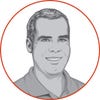January 21, 2017

We don’t want to buy the planter again.
As you know, we are working towards increasing our yields. The seed has been selected, the next component is planting and how we put the seed in the ground and feed it. We are coming near deadlines to make improvements to the planter. We are focusing our attention on three main areas of the planting operation. However, we aren’t going to do all three. Budget wise, that would be like buying the planter again.
We are evaluating downforce options. Using hydraulic downforce rather than air bags is one definite. Our soil types change quickly when going across the field. Lag times in air pressure changes can virtually be eliminated by using hydraulic. We would also look for uplift. Sometimes our sand and muck soils are just too fluffy. Even the weight of the row unit alone can lead to plowing the seed area, which is like planting the seed into a trench. Possible issues include more technology problems and additional hydraulic flow demand. It’s not easy to find data to support the purchase, however there is proof that varied or delayed emergence of corn plants in a row is detrimental to the yield. Another component to this possible purchase is the John Deere purchase of Precision Planting. It’s my understanding that if this goes through, design prints for their equipment will have to be released to competitors to avoid a monopoly. Will this lead to more competitive pricing for 2018?
We are also considering replacing the center frame wheels with tracks. Studies have shown up to 60 psi placed on the ground by the center wheels of bulk fill planters. Tracks can reduce this by a factor of 5. Beck's has conducted pinch row studies that show a 12.6% reduction in yield in those pinched rows. Will tracks alleviate this? If they even reduce that impact by two-thirds, the investment is a 1-year payback when looking at all our corn acres.
The third component we are looking at is adding back the side-by-side fertilizer. Ideally, I would like to go 2x2 on both sides of the row. There are a couple of ways to do this, we are most seriously considering a unit mounted attachment. We used to have starter on one side, but went away from it a few years ago when we went to in-furrow fertilizer. We have had mixed results with the pop-up, but would likely keep it as an early boost for the plant. The side-by-side mix would be more of a nitrogen-based product. Pictures can show a huge growth difference when comparing starter delivery methods, however, many years factors other than early growth (such as rainfall) are the limiting factor of yield.
If we do option 3, we’re adding more weight to the row unit and possibly requiring more pressure to push the fertilizer openers in ground (under certain conditions). In this case, planting would be much precise if we add the hydraulic down force. Unfortunately, downforce is the most expensive option we’re looking at. When considering the tracks, that may be the option with the best potential for immediate returns. From that perspective, tracks would be a lock. Maybe we will do options 2 & 3, as we have the components on a pallet to go back to a single side-by-side fertilizer application. I guess dad and I will have to sit down and hammer this out before Monday comes.
The opinions of the author are not necessarily those of Farm Futures or Penton Agriculture.
About the Author(s)
You May Also Like






